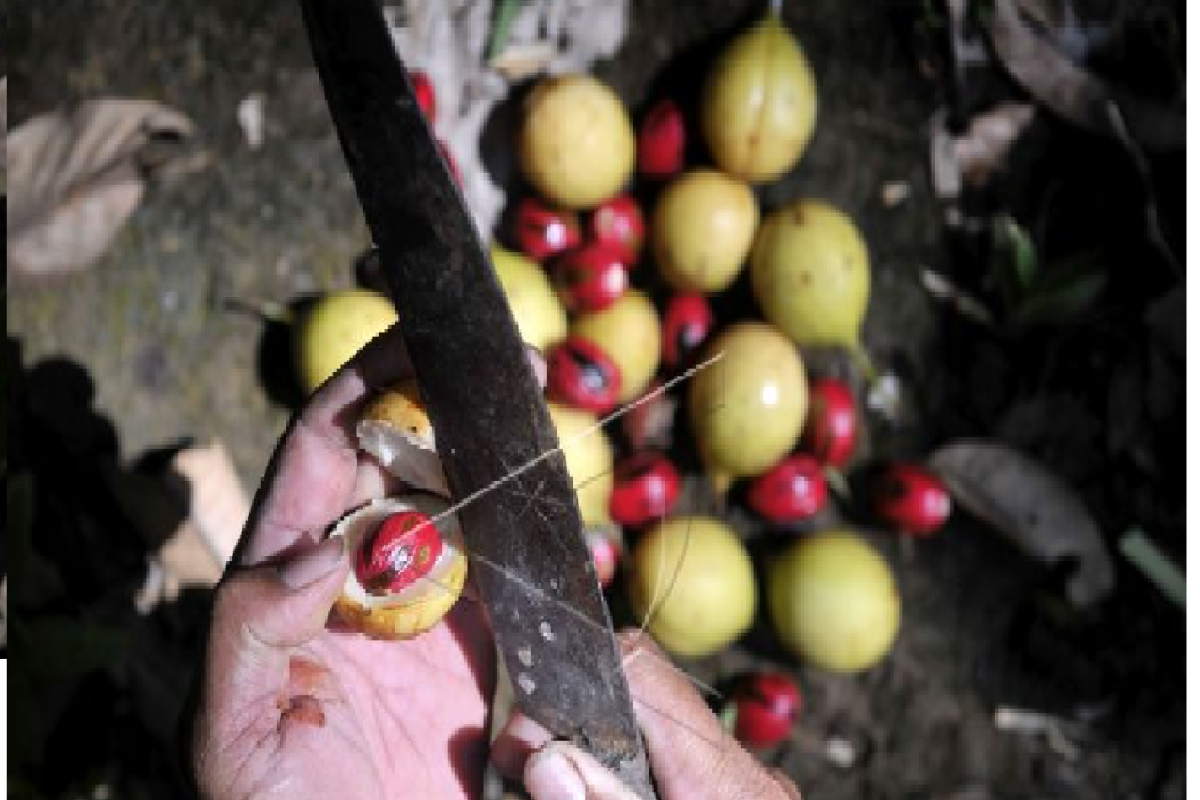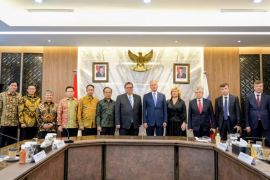It was referred to as the Dutch nutmeg because it has white flowers on the insideJakarta (ANTARA) - The Islands of Banda have stood witness to the nutmeg trade in its heyday, when the spice, which was endemic to the islands, flowed from Banda to different parts of the world — and remnants of this former glory have survived to this day.
At the time, nutmeg, which was predominantly used as a spice, was sold at a price higher than gold. It was also at the center of a conflict between The Netherlands, through its Vereenigde Oostindische Compagnie (VOC) trade alliance, with traders from the United Kingdom, Spain, China, and the Arab region, as they sought to monopolize its trade.
The traces of nutmeg’s rich past in Banda Islands are still visible to this day in the form of a Dutch fortress, a small castle, and a plantation filled with nutmeg trees that are hundreds of years old. The nutmeg’s history is also scattered across the seven populated islands of the 11 island clusters, including the islands of Gunungapi, Banda Besar (Lontar), Banda Neira, Hatta, Ay, Rhun, and Syahrir.
In November, 2020, a modified motor vehicle took ANTARA across a number of Dutch remnants dating back to the nutmeg trade in the island of Rhun through a footpath that stretched under nutmeg trees planted on the hillside.
“This is a Dutch nutmeg tree, and this is the fruit,” said 40-year-old Fadli, a resident of Rhun island, holding up an opened fruit
Although a casual observer will find it hard to distinguish between the Dutch nutmeg and nutmeg plants in general, Fadil said the difference lies in the black seed and white flower within the fruit.
Generally, the people of Rhun Island do not cultivate Dutch nutmeg, he said adding, there is no particular reason behind this.
Monopoly tactics
A young historian from Banda Island, Lukman A Ang, explained that the Dutch nutmeg, also called albino nutmeg by locals, was the result of a genetic manipulation by the Dutch when they colonized Banda Island.
“It was referred to as the Dutch nutmeg because it has white flowers on the inside,” he said.
He further explained that there is very little back story or reference in regard to the albino nutmeg. He said he obtained his own references from a number of figures in Banda Neira, including Des Alwi, a renowned historian. Further references were obtained from a Dutch researcher, he said.
After 1621, the Dutch began competing with traders from the European region and Asia for control of the nutmeg trade. To gain monopoly over the commodity, the Dutch began cultivating the albino nutmeg in one of the plantations on Banda Besar Island, Lukman said.
At the time, people, especially traders, knew the flowers of nutmeg by their red color, he said. The Dutch strived to carry out genetic manipulation to change the color of the flowers from red to white, all to monopolize and manipulate the trade, he explained.
“Every trader knows that white flower means that the nutmeg is yet to be ripe and cannot be harvested yet,” he said.
The tale of alleged monopoly tactics amid a trade war, he said, was obtained from a reference that came from the Netherlands’ Leiden Museum.
Up until today, people’s interest in cultivating Dutch nutmeg has remained considerably low due to the fact that it seems rather unconventional to grow nutmeg with white rather than red flowers, even though there is no difference in the shape and smell of both types of nutmeg, Lukman added.
According to Pongky Irwandi Van Den Broeke, the 64-year-old owner of a nutmeg plantation on Banda Besar Island, there is no difference in the two types of nutmeg.
He said himself has a few albino nutmeg trees on his plantation, although he does not focus on cultivating the commodity.
Despite the tales of alleged genetic manipulation, research done by Sri Soenarsih Diah on the North Maluku nutmeg based on the morphology diversity suggested that the albino nutmeg was not a result of genetic manipulation, rather, it belonged to the same species as the nutmeg (Myristica spp).
On their part, farmers have remained immune to the conflicting tales and uncertainty that has shrouded the origins of the Dutch nutmeg.
What is clear is that when the two nutmegs are put side by side, their red and white flowers tell the tale of Indonesia’s independence from 350 years of occupation.
Related news: For super-priority destination tag, Toba requires infrastructure push
Related news: Conserving North Maluku's maritime treasures
Editor: Gusti Nur Cahya Aryani
Copyright © ANTARA 2021












